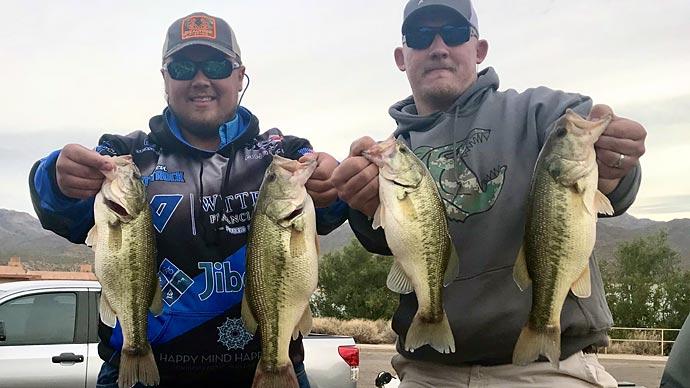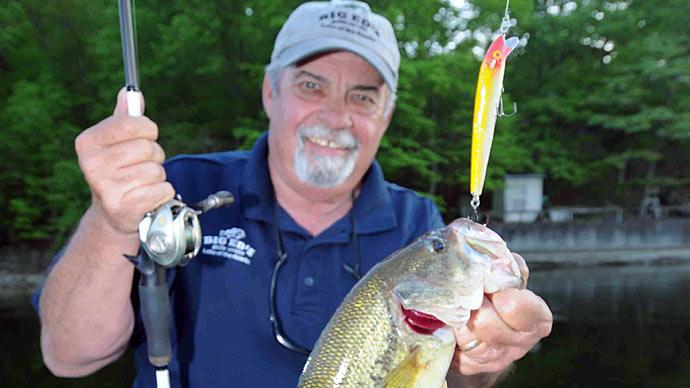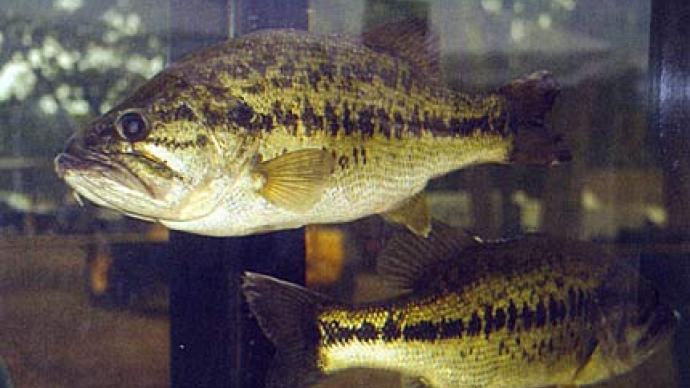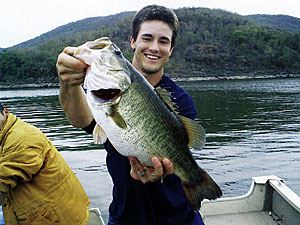
0ne fairly often asked question that comes over my transom is, "If I catch fish from another pond or lake, what are your thoughts about stocking those into my pond?"
While there are upsides, you also need to know the down sides.
The biggest upside is cost. People still think fish, watermelons and pecans are free.
If you can catch a six pound bass at local Lake Dunkahook, why not bring it to your fresh, new, unstocked four acre fishing paradise?
All the upsides have qualifying statements, except that obvious one of cost ... not to mention comparing the boat payments, fuel, ice chest full of goodies, bait and boat storage fees you pay to catch that big fish ... those invisible costs might make us think a fish caught elsewhere is free.
It's not.
When stocking a lake, you are on a mission. They way you do it directly affects the results you will receive.
I can't tell you how many times I hear this... "I paid a lot to have this pond built, and we went over budget, so I need to save money in the way I stock it."

That's backwards thinking, folks.
Let's say your goals are similar to 80% of the people I consult... you want a "balanced" fishery consisting of largemouth bass, bluegill, some redear and maybe a few catfish for diversity. Or, up north, fathead minnows, walleye, pumpkinseed and maybe a few smallies and yellow perch.
The stocking rates you choose will have a direct impact on how well your fishery develops. It's a numbers game fueled by reproduction.
Always remember this ... build the food chain, first. No food chain, no big numbers of big game fish later.
Use fish that complement each other. In the south, the standard recommendations are to stock a new body of water with 1-2,000 bluegill fingerlings per surface acre with 5-10 pounds of fathead minnows with them. Be sure to add a few hundred fingerling shellcrackers per acre, too. Biologists make these recommendations in order to develop an adequate food chain for the game fish you ultimately stock. Reproduction of bluegill in the south can become almost logarithmic, given a few months. Always keep in mind it takes about ten pounds of forage fish for a bass to gain one pound. Bluegill in northern waters have a different dynamic, so keep that in mind as you prepare to stock. Know your fish.
Let's say you want to stock a five acre pond in Missouri on the cheap, by catching fish and transferring them.
You have a source of adult bluegill at Farmer Joe's dairy pond, so you grab a couple boxes of nightcrawlers, your ultra-light rigged with 4 pound test, some 1/32 oz jigs and you head off with an ice chest and one of those 12 volt aerators you can buy at the local big box tackle store.

You have a good day on that little one acre pond, catching 75 big bluegill, one at a time, watching the kids giggle as each panfish flops and splashes. The only reason you stopped? Ran out of bait and you're too slow to catch enough of those grasshoppers chewing Farmer Joe's hay meadow.
Alrighty, then. Your ice chest is full of water and the aerator is going full bore. You head home with those 75 5-6 inch bluegill. You get to the lake, temper them with your pond water, just as the book says, then release the fish.
Mission accomplished.
Congratulations.
In order to have enough adult bluegill of the size you just caught to properly stock a new four acre fishing pond, you need somewhere between 400 and 600 head, depending on fish size. Expect to pay $1.25-2.00 each for those fish from a reputable hatchery.
Those 75, while a fair start, aren't nearly enough. It will take two years for that few bluegills to reproduce enough to properly build a food chain to support largemouth bass in a pond the size of yours. 400 bluegill may sound easy to catch from the neighbor's pond... but you also have to ask yourself, "What will removing that many fish do to the pond where we're catching them?"
You need to know that.
Let's say all is well and you are able to catch enough bluegill ... then what?
Feed them, watch them have babies and make sure you are getting the reproduction your lake needs.
Fast forward a few months, maybe a year, and you are ready for bass.
How many of those things should you go catch and stock? Depends on the size of bass and time of year. One of the worst things you can do is under stock a lake with any species of fish, especially bass.
Why, you ask?
Guess what a bass does when it has abundant food, plenty of cover, no competition and plenty of space?
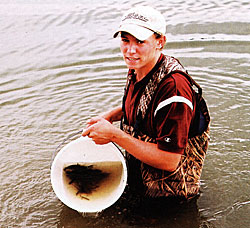
They reproduce like crazy. Literally. I can't tell you how many times over the years I've been called out to investigate and analyze a lake that was stocked using bucket biology. Inevitably, those few bass stocked from the neighbor next door have grown to three or four pounds, had thousands of babies that have overwhelmed an underwhelming or neglected food chain and this lake is full of little bass flying all over the place, chasing dragonflies because that's all there is to eat.
Those few bass are monsters, limited in potential by how old they were when you caught them and by their genetic propensity. Who knows how large they'll grow?
I don't .... and neither do you.
Assuming the food chain is well developed in your lake, how many bass can you catch from your buddy's pond to get the "right" numbers?
For largemouth bass in a pond with zero predators and a healthy food chain... stock 20 10-12" bass per surface acre. Don't go much higher or lower than that. Just be sure your food chain is ready or you'll end up with too many small bass in year three, also.
So, the upsides are ... the fish are "free." They really aren't, but we FEEL like they are. What are the downsides?
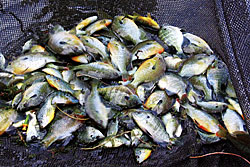
The biggest downside is that you rarely catch enough of whatever species you are looking for to adequately stock a lake. Another downside is that you don't know the secrets those fish carry. Sure, you hear the age-old adage that you are likely to introduce diseases. The truth is most fish in private fishing waters carry some number and variety of parasites that are transferred via birds' digestive systems. Rarely is a legitimate disease transmitted from pond to pond, but parasites certainly are. But, some of the other secrets might be just as disturbing, even though they don't directly affect the fish's health. Most people think that catching a 15 inch bass from the neighbor's pond 'buys' the first two or three years growth. Not necessarily true. Odds are, if the lake you are removing fish from is older than 8-10 years, that 15 inch bass is at least four, maybe older. Its growth potential is limited by its age, not to mention its genetics. Okay, okay, let's mention genetics. Unless you know the genetics of the fish you are capturing, you are only guessing. Guessing doesn't work well, except on the Price is Right... hmmm ... I guess that's what we're doing when we transfer someone else's fish into our waters.
I'll always remember a man whose lake I stocked many years ago. He wanted some bigger fish. He didn't want to, "wait for those darn finger-length fish to grow up." So, I convinced a couple of my clients to part with some darn nice sized bass. We took those big bass, six, seven and eight pounders, out of several muddy ranch ponds and transferred them to a beautiful, new, clear lake teeming with all sorts of food ... a bass didn't have to swim far at all. Just open its mouth and suck ... baitfish would go straight in.
Over the next few years, I had the opportunity to see some of those fish again via electrofishing surveys. Lo and behold, the eight pounder grew to 7-1/2 the first year and then was close to 6 the second. Same with the others. They were losing weight! What was up with that?
They had all the food they needed and a landowner willing to write a check for more.
That lesson, 20-odd years ago, has been embedded in my brain ever since.
I've seen it, over and over again.
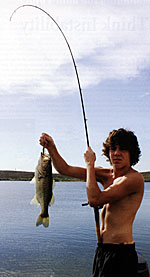
These fish, from the source you wish to take, have become totally conditioned to that environment. Fish grow and respond based on two things... instinct and conditioning. Adult fish that are successful in one environment won't necessarily make the change to a new, "improved" environment. Younger fish seem to adapt better to a new environment, but older, larger fish may not. Keep that in mind as you choose to move fish.
Another down side is that just because you move 25 fish one day doesn't mean those fish will survive the move. And, you won't necessarily be there to see how many floaters you have three days later. If you've never handled that many fish with the goal to keep them healthy, it isn't as easy as it sounds.
I don't want to totally throw cold water on your mission to transfer fish.
If you know the source and can trust the ages of fish and you know the donor pond needs some harvesting, by all means, do it. But, be sure you are properly stocking the new water while you don't pillage the donor water.
Take time to think about the consequences of your bucket biology way before you attempt it.
Here's my bottom line. I won't recommend transferring fish from one lake to another very often. But, you might think..."Lusk, that's because you are in the fish business." Yep, that's right. I'm also in the "success" business. If you follow tried and true recommendations and methods, it won't be long until the business end of your favorite cane pole will be bent double with your fish of a lifetime. You'll giggle like a school girl. At the same time, I'll make my living no matter what decisions you make. I've seen enough situations over 30 years to confidently tell you I have seen more failures than successes via bucket biology... simply because most people won't take the time to consider the numbers, the lifestyles, the ages or species of the fish they catch and move.
There's only one time I steadily recommend moving fish from one pond to another... and that's if you want to adjust or improve the genetics of a fishery by moving fish of a known genetic heritage.
Also remember this ... don't ever, ever stock species of fish that you don't know. Not only do you stand to alter your waters, you also stand a reasonable chance to disrupt what's going on both up and downstream of your fishing hole.
As always, I'll encourage you to learn as much as you can about the decisions you make ... BEFORE you make them.
It ain't easy to unpickle a fisheries pickle. I promise.
I've had to do it.
I'd rather not do it for you.
Reprinted with permission from Pond Boss Magazine

